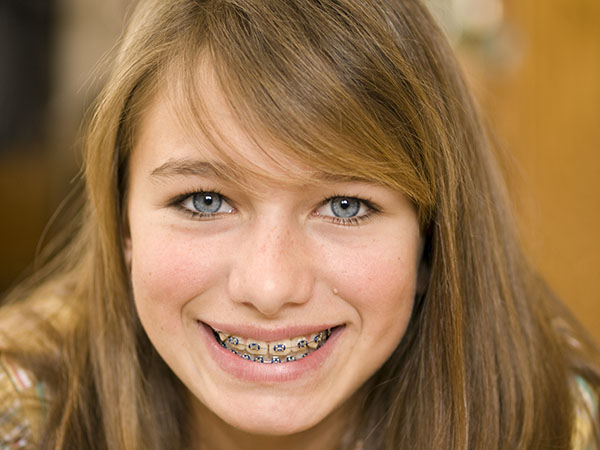What Age is Best for Orthodontics for Kids?

Orthodontics for kids can be administered as early as age seven. Generally speaking, the earlier your dentist starts addressing your child's alignment issues, the easier it is to correct the problem.
A dentist might even decide to begin administering orthodontics for kids before seven years of age, depending on the severity of your child's issues.
Ideally, the treatment of alignment issues for children begins when all the permanent teeth begin growing in. That happens somewhere between the ages of 8 to 14.
Your dentist might decide to use different orthodontic devices instead of braces during the initial stages of treatment. Once your child has all of his/her permanent teeth, the second stage of treatment can begin. This usually involves the use of braces, also known as an interceptive method of treating alignment issues. It is also the more affordable option since it reduces the length of time your child spends wearing braces.
While braces are an effective way to force poorly aligned teeth back into their proper position, they cannot treat certain issues in young children, like overbites. Children with such problems will have to wait until they are older for treatment. This happens around the 12-year mark.
How to determine if your child needs orthodontics for kids
There are certain things that typically indicate your child's teeth have alignment issues. These include:
What causes alignment issues in young children?
Genetics play a huge role in the alignment of your child's teeth, but there are other factors like tooth decay, poor nutrition, and finger sucking that can affect the way his/her teeth come out. Fortunately, there are several dental devices that can be used to straighten your child's teeth. Braces are one of the first things that come to most people's minds when the topic of teeth straightening comes up, and they almost exclusively deal with alignment issues in adults.
Braces apply constant pressure to your teeth. Over time, this pushes your teeth into the proper position. Traditional metal braces are less common since there are more discrete ways to straighten your teeth. If your dentist decides your child needs braces, your options include:
Clear braces are becoming increasingly popular nowadays since they allow you to discreetly straighten your teeth.
Your child will receive a series of trays to wear for a couple of weeks, and each one pushes your child's teeth closer to the proper position. Unlike traditional braces, which can be difficult to clean and eat with, we can easily remove clear braces when it is meal time, making them a lot easier to manage. Your dentist will help you to decide what type of braces would be best for your child.
Want to know more about orthodontics for kids? Contact a dentist today.
Please call Visalia Care Dental today at (559) 975-1213 or go to https://www.dentistofvisalia.com for more information!
Related Posts
A kid-friendly dentist can perform a dental cleaning on children safely. It is a non-invasive procedure with very little to no risk involved for the child. However, it is still helpful for parents to understand what performing a dental cleaning on children is like and when it is recommended to make informed decisions about their…
The first appointment that a child has with a kid-friendly dentist may involve a friendly chat to get to know one another, non-invasive dental X-rays, and a recommended treatment plan. If there are no oral health concerns, then the dentist can provide preventive services such as dental cleanings and educate the child and their parents…
Parents are encouraged to take their child to the dentist by their child’s first birthday. There are other signs that indicate a need to see a kid-friendly dentist, as well. This review discusses when to see a kid-friendly dentist, which helps ensure that children are able to receive the care they need to maintain a…
A kid-friendly dentist can treat a range of oral health concerns. However, their primary focus is on helping children prevent oral health concerns from developing through good oral hygiene at home. This includes offering educational services to ensure parents and children have all of the information they need to keep a consistent oral care routine…
